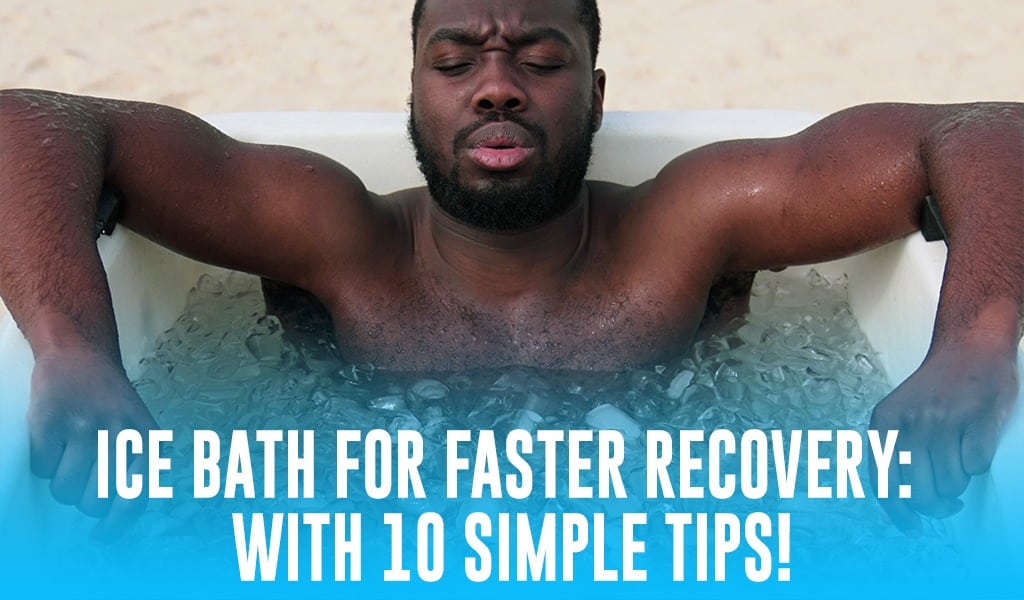Ice baths, also known as cold water immersion therapy, have gained significant popularity in recent years as a powerful method for aiding recovery from injuries. Athletes, fitness enthusiasts, and even medical professionals have recognized the numerous benefits of ice baths in promoting healing and enhancing performance. In this article, we will explore in detail how ice baths can be instrumental in the recovery process after injuries.

Key Takeaways:
- Ice baths reduce inflammation and swelling in injured tissues.
- They alleviate pain and soreness, aiding in recovery.
- Ice baths accelerate the healing process, enabling a faster return to physical activity.
- Improved circulation during ice baths enhances tissue repair.
- Regular ice bath therapy can improve overall performance by allowing more intense training and reducing muscle soreness.
Table of Contents
10 Simple Tips for Using an Ice Bath for Injury Recovery
- Time it Right: Take an ice bath soon after an injury or intense workout to reduce inflammation.
- Limit Duration: Keep the ice bath to 10-15 minutes to avoid adverse effects.
- Warm Up First: Do light exercise or take a warm shower before the ice bath.
- Stay Active: Move gently in the water to enhance circulation and promote healing.
- Protect Your Skin: Wear clothing to shield your skin from direct contact with the cold water.
- Use a Timer: Set a timer to avoid overdoing it in the ice bath.
- Hydrate Afterward: Drink warm fluids after the ice bath to rehydrate your body.
- Consult a Professional: If you have medical concerns, seek advice from a healthcare professional.
- Combine with Other Therapies: Ice baths can complement rest, nutrition, and stretching exercises.
- Listen to Your Body: Pay attention to how you feel and adjust the ice bath accordingly.
How does ice bath help Recovery?
1. Reduces Inflammation and Swelling
One of the primary benefits of ice baths is their ability to reduce inflammation and swelling in injured tissues. When the body is subjected to cold temperatures during an ice bath, blood vessels constrict, which slows down the blood flow to the injured area. This decreased blood flow minimizes the inflammation response, preventing excessive swelling and providing relief from pain and discomfort.
2. Alleviates Pain and Soreness
Ice baths work as natural analgesics, numbing the nerves and reducing pain sensation in the injured region. As a result, athletes and individuals recovering from injuries find relief from soreness and discomfort, enabling them to engage in rehabilitation exercises more effectively.
3. Accelerates Recovery Process
By reducing inflammation and promoting healing, ice baths accelerate the recovery process significantly. The cold water immersion stimulates the body’s natural healing mechanisms, leading to a faster repair of damaged tissues. This, in turn, expedites the return to training or physical activity.
4. Prevents Delayed-Onset Muscle Soreness (DOMS)
Delayed-Onset Muscle Soreness, commonly known as DOMS, often occurs after intense physical workouts or activities. Ice baths are highly effective in minimizing DOMS by flushing out the lactic acid and waste products that accumulate in the muscles during strenuous exercise. The reduction of these waste products helps muscles recover faster and reduces the severity of DOMS.
5. Improve Circulation
While ice baths initially cause vasoconstriction, the body responds with vasodilation after exiting the cold water. This dilation of blood vessels improves circulation and increases the flow of oxygen and nutrient-rich blood to the injured tissues. Improved circulation aids in tissue repair and regeneration, expediting the healing process.
6. Lowers Metabolic Rate and Reduces Cell Damage
During an ice bath, the body’s metabolic rate decreases, leading to a reduction in cellular activity. This reduction in metabolic rate helps protect the injured cells from further damage, giving them time to recover and heal.
7. Reduces Muscle Spasms
Ice baths have a muscle-relaxing effect, which is especially beneficial for individuals dealing with muscle spasms due to injuries. Cold water immersion helps soothe muscle fibers and reduce spasms, providing much-needed relief.
8. Mental and Psychological Benefits
In addition to the physical benefits, ice baths offer mental and psychological advantages to individuals recovering from injuries. The intense cold triggers the release of endorphins, which act as natural mood elevators, reducing stress and anxiety associated with the recovery process.
9. Enhances Performance and Training
Regular ice bath therapy can lead to an overall improvement in performance, as it allows athletes and fitness enthusiasts to train more frequently and intensely without the risk of overtraining or injury. The ability to recover quickly from strenuous workouts enables individuals to push their physical boundaries and achieve better results.
10. Safe and Cost-Effective Recovery Method
Compared to some medical interventions and therapies, ice baths are a safe and cost-effective recovery method. They do not involve the use of medication or complex equipment, making them accessible to a wide range of individuals seeking injury rehabilitation.
FAQ
Are ice baths good for injuries?
Yes, ice baths can help speed up your recovery time for injuries.
Do ice baths speed up healing?
Ice baths may speed up healing by increasing blood flow, which floods cells with nutrients and oxygen to help the body recover.
How long do you soak an injury in an ice bath?
For an ice bath to be effective in treating an injury, it is generally recommended to soak the injured area for 10 to 15 minutes.
How long should an ice bath be?
An ice bath should typically last for about 10-15 minutes.
Is ice bath good for recovery?
Yes, ice baths can be beneficial for recovery after intense physical activity or exercise. They may help reduce muscle inflammation and soreness by constricting blood vessels and decreasing metabolic activity in the affected areas.
Reff. Wikipedia.com
